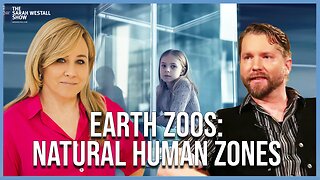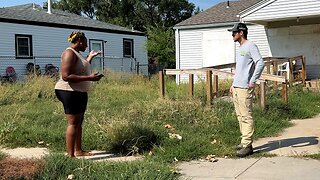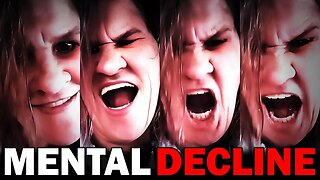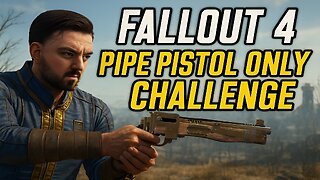Premium Only Content

47. Big Ideas Explained
What Others Have Said About The Big Idea
David Ogilvy’s Definition of the Big Idea:
“You can do homework from now until doomsday, but you will never win fame and fortune unless you also invent Big Ideas. It takes a Big Idea to attract the attention of consumers and get them to buy your product. Research can’t help you much, because it cannot predict the cumulative value of an idea, and no idea is big unless it will work for 30 years."
Ogilvy’s Checklist:
Did it make me gasp when I first saw it?
Do I wish I had thought of it myself?
Is it unique?
Does it fit the strategy to perfection?
Could it be used for 30 years?
From Ogilvy Again:
A big idea is an idea that is instantly comprehended as important, exciting, and beneficial. It also leads to an inevitable conclusion, a conclusion that makes it easy to sell your product.
From John Forde:
“Think about it.
“When you have a ‘great’ conversation … read a ‘great’ book … or see a ‘great’ documentary … what grabs you? Is it the litany of small details? Or the golden thread that unites them?
“More often than not, for most of us, it’s the latter.
“And the more you ‘get’ the core idea behind a story, a speech, a revelation … the more memorable that one core message becomes.
“This is just as true in sales copy.
“One message, well developed, just has more impact than ads—short or long—that are overloaded with competing ideas.”
Two Resources:
https://www.awai.com/2016/05/the-big-idea-is-hidden-in-this-5-point-checklist/
https://www.earlytorise.com/the-big-idea/
Stefan’s Criteria For Big Ideas In Sales Copy:
If I look at your writing…
Will I be able to quickly and succinctly explain the big idea behind it to my friends or family?
And will I be able to do it WITHOUT having to go back to the promo for any reminders?
It may be helpful to think of your Big Idea as being similar to a “meme.”
Meme: an idea, behavior, style, or usage that spreads from person to person with a culture.
In reality, most memes that go “viral” are ones that are short, immediately intellectually accessible, and that elicit an emotional response (usually humor in the case of memes, but also sometimes anger, curiosity, etc).
Another Way To Understand Big Ideas is to Look At Non-Fiction
When you think about it, almost every non-fiction book has a big idea.
Especially business books…
Start With Why (Simon Sinek)
https://www.amazon.com/Start-Why-Leaders-Inspire-Everyone/dp/1591846447
Big Idea: We spend all of this time talking about the “what” and “how” of things. But the most effective people and organizations first identify their WHY. Their WHY is the big driver behind everything they do. Getting clear on your WHY can guide everything you do.
From Good to Great (Jim Collins)
https://www.amazon.com/Good-Great-Some-Companies-Others-ebook/dp/B0058DRUV6
Big Idea: There are certain predictable factors that enable mediocre companies to become great companies. When organizations apply these factors, they too can make the leap.
7 Habits of Highly Effective People (Stephen R. Covey)
https://www.amazon.com/Habits-Highly-Effective-People-Powerful/dp/0743269519
Big Idea: There are 7 habits that the most effective people strictly adhere too, and that the rest of us don’t. By tackling these habits in sequential order, we can become the most powerful and effective version of ourselves.
The One Thing (Gary Keller)
https://www.amazon.com/ONE-Thing-Surprisingly-Extraordinary-Results-ebook/dp/B00C1BHQXK
The key to success is paradoxically to do less. The key to success and effectiveness in both personal and professional spheres is to cut out the B.S. and focus on the single, largest needle mover.
I always go back to Pimsleur…
Pimsleur’s Big Idea:
It’s easy - seemingly effortless - for a child to learn a new language, while it’s exceedingly hard for adults. The reason why is because children learn innately, while adults are taught through rote learning, memorization, and drilling. So if you want to learn a new language, you should learn as a child does.
This is an idea that is very easy to remember and explain to others.
Stefan’s Steps for Finding The Big Idea:
Research
I’m still going through the research module and paying special attention to the following:
Who the market is?
What is their #1 pain point/problem that they want solved?
Mechanism
What is the traditional explanation of the problem?
What is the traditional explanation of the solution?
Is there a new, contrarian explanation of the problem or solution that catches your attention?
Do any of those new or contrarian explanations make YOU excited?
Do you believe that, based on your research, YOUR TARGET MARKET will also feel excited?
Can YOU find ample evidence to support these new or contrarian explanations?
For #2: Sometimes the easiest and best place to find this information is by simply searching for news stories about the subject.
Example: Telomere Product
https://www.sciencedaily.com/releases/2019/05/190515110311.htm
https://www.wired.com/story/biomarkers-age-management/
https://www.tmc.edu/news/2018/11/bodies-in-space-what-changes-at-the-cellular-level/
https://medicalxpress.com/news/2019-08-runaway-mitochondria-telomere-cells.html
Which One Did I Choose?
Ultimately I chose to develop my big idea around this one:
Some ideas I had for hooks and angles around a big idea.
“It’s not the length that counts”…
Programmed to die…
“The cells in your body are programmed to die. What if you could rewrite the code?”
Spanish Researchers Discover New “Immortality Equation” Hidden Inside Our Cells
Cellular Death Clock
A better predictor than body size or heart rate
As far as summarizing the big idea goes, I started with this:
Lots of people now know about telomeres. And they’ve heard that shrinking telomeres are a hallmark of aging, disease, and death. But what you probably haven’t heard is that it’s not the length of your telomeres that’s most important, it’s the rate at which they shrink. The fact is, mice often have longer telomeres than humans. Yet they only live 2 years. Humans live 78 years. Why? Because the telomeres in mice are programmed to shrink at a much quicker rate than humans do, and they die much faster as a result.
Spanish Researchers looked at 9 different animals (including humans) and proved this. So if you want to live longer, stay younger, and protect yourself from disease – you need to stop or slow the rate at which your telomeres shrink.
To put it even more simply, the big idea here is:
It’s not the length of your telomeres that matters, it’s how fast they shrink. The faster they shrink, the faster you age and get sick.
FAQS:
What role does the story play?
In my opinion, the story is used to illustrate the big idea. The story itself is NOT the big idea.
Is the headline the big idea?
Often the headline will promote the big idea, but it’s not the big idea.
Is the mechanism the big idea?
It’s close. But the mechanism is lengthier. The Big Idea is ultimately the single idea behind your argument/promise that someone can quickly understand and easily share with others.
What’s the difference between the Big Idea and the USP (Unique Selling Proposition)?
The USP relates specifically to the product being sold. It’s the pitch that differentiates the product and makes you want to buy it.
The Big Idea relates specifically to the promise of the sales copy. It’s what captures your attention and makes you want to engage with the copy.
Example: Burn (Weight Loss)
Market:
Women and men between the ages of 25 and 50 who want to lose weight fast.
Pain Point:
They can’t lose weight, or keep weight off, no matter how what they do or how hard they try.
Big Idea:
Harvard has discovered a loophole that lets your body burn all of your stored fat at the same time. “Simultaneous Fat Release.”
Example: Biz Opp
Market:
Generally lower income, straddling the poverty line, and 45+. Believe that just like young people are making millions on the Internet, or even billions, they could too. Maybe they’ve had some business idea in the past that their friends have said are good, but they either don’t have the money to act, or have never acted.
Others may just be semi-retired, or retired, and looking for something productive to do with their time.
Pain Point:
Struggling to pay the bills. Worried about retirement. Hate their job. Worried about being broke, or struggling for the rest of their lives.
Big Idea:
You can make money by acting as the “middle man” between retail stores and liquidators, and you don’t need any formal education or training to do it.
-
 54:47
54:47
Sarah Westall
10 hours agoTranshumanism vs Natural Human Zones, AI consciousness and the Hive Mind Future w/ Joe Allen
80.8K32 -
![[LIVE] The Sunday Surprise! | Testing Halo Star Wars Mods!](https://1a-1791.com/video/fww1/70/s8/1/U/P/W/x/UPWxy.0kob-small-LIVE-The-Sunday-Surprise-A-.jpg) 4:29:06
4:29:06
Joke65
7 hours ago[LIVE] The Sunday Surprise! | Testing Halo Star Wars Mods!
59.7K -
 3:09:00
3:09:00
MaverickLIVE
7 hours agoFirst Rumble Stream!
51.3K2 -
 8:06:12
8:06:12
xTimsanityx
11 hours ago🟢LIVE: COACH ALWAYS TOLD ME, "SHOOTERS SHOOT" | GOONING ON E-DISTRICT
38.5K2 -
 32:19
32:19
SB Mowing
2 days agoThis yard was putting KIDS IN DANGER - Now they can SAFELY play outside again
47.8K26 -
 LIVE
LIVE
Lofi Girl
2 years agolofi hip hop radio 📚 - beats to relax/study to
291 watching -
 47:41
47:41
Tactical Advisor
11 hours agoMake Your AR15 into a Bullpup/New Thermals | Vault Room Live Stream 018
58.8K16 -
 18:07
18:07
Bearing
18 hours agoThe INSANE MENTAL DECLINE of the Democrats 💥 Lefties are NOT Ok
69.9K146 -
 3:24:33
3:24:33
Thomas Xplores
11 hours ago $0.60 earnedBeating Fallout 4 With Pipe Pistols Only - Ep. 2
22.4K -
 5:54:43
5:54:43
RelliksGaming
10 hours agoFinding Our Base
21.8K